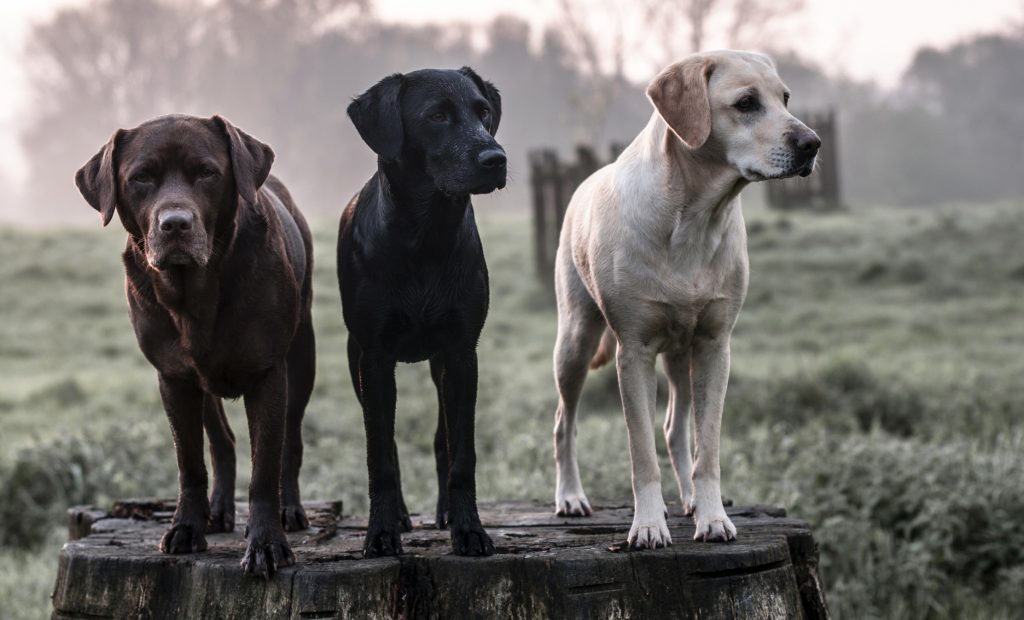
The three dogs of yoga
Why Dogs?
The practice of yoga is known to be about 3 to 5 thousand years old so it’s a bit hard to exactly track how the poses evolved. I shared before that I subscribe to my own theory that the origins of downward dog evolved from the ancient yogis merely looking around. They, like us, spent a lot of time sitting, though they were sitting in meditation. They, most likely like us, had wandering minds and their own variety of distractions. They, like us, eventually gave in to boredom or biology and had to get up.
Animals move their bodies by instinct in response to what is around them and what they need. Rest, run, hunt, eat and stretch. My theory is that the sitting yogis were most likely watching the animals while meditating and observed how they stretched. When the yogis got up they gave those stretches a try.
Dog #1: Downward Dog
Most dogs stretch like this. If you have a dog, and you practice yoga, for some reason as soon as you climb on your yoga mat your dog will demonstrate the perfect downward dog.

Most people look something like this.

The upside down V shape of downward dog is a relatively simple shape that engages fingertips to toes and boasts of many benefits. In some yoga classes, downward dog is called a “rest” pose, however, it may be brand new for you or still be a challenge even after years of practicing yoga.
You are not alone. Most dogs spend their days sleeping or running around. Most of us spend the day sitting. So first, take a deep breath. You are where you are AND you can make some shifts, bit-by-bit, day-by-day.
If you’re new to yoga or you have tight hamstrings, cranky shoulders or a past injury you’ll want to take care with downward dog to make sure it is working for you and not causing any further complications. If you feel like downward dog is too much right now, no worries, there are two other dogs below for you to explore.
If you’re ready to go, I’d suggest starting with this 8-minute video.
If you’re pretty comfortable with downward dog but it’s that step forward from downward dog into a lunge check out this video for some helpful tips. If you have yoga blocks at home, here’s an additional exploration using blocks against the wall.
Dog #2: Puppy Pose
So this variation of the pose, called Extended Puppy Pose or Heart Melting pose. Think of it as the pose that is about halfway in between downward dog and child’s pose. It allows you to enjoy the stretch in the arms, shoulder and armpits.

Often it is part of a Yin Yoga pose that is held for about 1 to 3 minutes. Join Monique Christine for this 12-minute video and her thorough explanation of this pose.
Dog #3: A Dog for Your Desk
So those dogs, and the yogis that were watching them, were most likely not sitting at desks like many of us. This pose is desk dog. I call it the “modern dog” of the three. You get almost all of the benefits of downward dog; the shoulder and arm stretch, hamstrings stretch and hips above your heart positioning. There is not quite as much of a calf stretch but if you lift up on your tiptoes and go up and down slowly you’ll get that calf stretch too! Plus it can be a little awkward to be getting upside down at the office.

Here’s a short video as to what it looks like to get into this pose.
Desk dog, feels amazing and I love the support of the desk. First, place the full palm of your hands on the edge of your desk, shoulder-width apart, fingers spread wide, pressing the joints of the balls of your hands into the desk, like you are making a handprint into clay with the full hand on the desk.
Step back, with your head in between the arms and make a 90-degree angle with your hips so your torso is parallel to the desk and floor and your legs are perpendicular to the floor.
Bend the knees a bit and then press your thighbones back into your hamstrings. Feel your tailbone is pulling away from your hands, the crown of your head pressing toward the space in between your hands for a spine stretch. Let the shoulders soften and you can slowly as you inhale and exhale lift up on to you tiptoes or bend and straighten your knees to add a little more stretch in the leg depending on where it feels good.
Enjoy four to eight long, deep breaths. To come out of the pose, lift your head up and step forward. This is an inversion, your head below the heart, and it shifts the blood flow, so come back up easily. Stand tall and take a few more deep breaths.
Now you have three dogs to explore this week. Here are two ideas for how to practice these this week.
#1. Try each dog 1 x /day for 7 days.
#2. Explore one dog each day for 15 minutes, watch the videos, read the articles or just play. Rotate through and then on day 7 pick your favorite dog to revisit one more time. Remember these are not “workouts” they are explorations.
Have fun with your dogs!
Leave a Comment